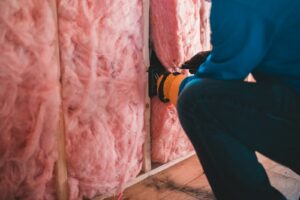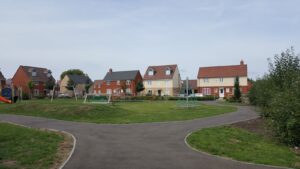Going with the grain
Take a look at the picture on the right. Can you guess what it is?
It’s sand, magnified 250 times.
I love this image, which has been doing the rounds on Twitter recently, because it reminds me of the neighbourhoods I’ve been lucky enough to work in.
To the disinterested observer, sand is deadly dull. Yet when you look much more closely, as this image allows us to so, its surprising richness and diversity is revealed.
The image makes me think of neighbourhoods because there’s a similar tendency in policy discourse to talk about the ‘ordinary families’ living in ‘typical streets’ that make up ‘your average neighbourhood’. From this lofty perspective, neighbourhoods must seem equally monotonous.
When I worked in the civil service, a common question thrown at an emerging policy was ‘How would this impact in a typical place?’ Obviously, civil servants with national responsibilities have to generalise, but the assumption that neighbourhoods generally conform to a norm leads to all kinds of irrelevant targets and rules.
The reality is very different. If we take time to look, we can see that neighbourhoods are full of gems and shells, rocks and pearls. People with unexpected stories, landmarks loaded with significance, networks of friendliness and gossip.
It’s this insight which underpins the asset-based community development movement, with its insistence that local skills and capabilities must be the starting point for solving local problems. It’s this insight which informs the Big Local programme, with its commitment to community-led change and experimentation instead of bureaucracy and rules. And it’s this insight which has inspired the RSA’s ‘social network analysis’ approach to understanding how complex webs of relationships influence how we behave.
Sometimes, the unexpected in a neighbourhood can be truly delightful. While doing fieldwork with retailers in an indoor market recently, I came across a man called Johnny. For the past eight years, Johnny has been making, from scratch, an automated clock. When complete, it will have fourteen automated moving parts and thousands of individually hand-crafted components, laid out to resemble a fairy tale grotto.
Like a real-life Hugo, Johnny was inspired by the automatons he saw at Southend when he was a child. Now, in his sixties, he wants to do make that something that celebrates the craft and inspires future generations.
 One of the retailers in the market has donated a shop window, to put the parts on show. You have to use a magnifying glass, almost as strong as the one used by scientists on the sand, to understand just how intricate the pieces are. You can see in the picture on the right some of the creatures and toadstools, each one individually shaped and painted, that will live in the grotto.
One of the retailers in the market has donated a shop window, to put the parts on show. You have to use a magnifying glass, almost as strong as the one used by scientists on the sand, to understand just how intricate the pieces are. You can see in the picture on the right some of the creatures and toadstools, each one individually shaped and painted, that will live in the grotto.
The more I looked, the more I could see. The more I could see, the more I could appreciate the strangeness, richness and capacity to delight that abounds is ‘your average neighbourhood’.
















Great piece John. Love the analogy. As with Johnny, Big Local is giving us the chance to discover so many great stories from so many great people using an asset centred, positive, appreciative approach (whichever label fits).
Through asking the right questions we can find out what’s great in our communities instead of them being labeled and stigmatised as ‘problem’ areas – and even being patronised by being given money because of it (a humbling insight I learned from an area this week).
We know the problems. We don’t need to ask people about them and they are fed up of it anyway.
What we don’t know and can’t celebrate is what is hidden to the naked eye: great people, great passion, great stories, great strengths, great commitment – which makes for great assets.